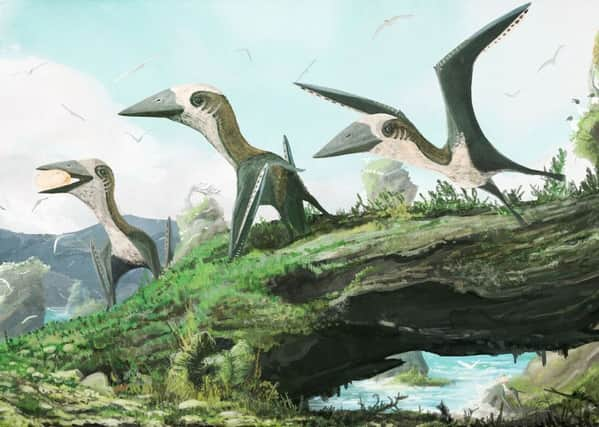Flying reptile fossil rewrites story of battle for prehistoric sites
This article contains affiliate links. We may earn a small commission on items purchased through this article, but that does not affect our editorial judgement.


The rare reptile, with a wingspan of “only” 1.5 metres (4.9ft), would have been dwarfed by its cousins from the Late Cretaceous era 77 million years ago.
Some of them were much larger, with wingspans of up to 11 metres (36 feet), making them the size of a small plane.
Advertisement
Hide AdAdvertisement
Hide AdBut what the new specimen, thought to belong to the azhdarchoid pterosaur family, lacks in size it makes up for in terms of scientific importance.
Before the discovery in Canada, researchers thought small pterosaurs had been unable to compete with early birds in the Late Cretaceous.
Lead scientist Elizabeth Martin-Silverstone, from the University of Southampton, said: “This new pterosaur is exciting because it suggests that small pterosaurs were present all the way until the end of the Cretaceous, and weren’t out-competed by birds.
“The hollow bones of pterosaurs are notoriously poorly preserved, and larger animals seem to be preferentially preserved in similarly aged Late Cretaceous ecosystems of North America. This suggests that a small pterosaur would very rarely be preserved, but not necessarily that they didn’t exist.”
Advertisement
Hide AdAdvertisement
Hide AdFossil fragments from the pterosaur were found on Hornby Island, British Columbia, in 2009. A detailed study of the fossils has only now been published in the Royal Society journal Open Science.
Pterosaurs - which were not flying dinosaurs - were the earliest vertebrates to develop powered flight, pre-dating birds by millions of years.
For some 140 million years they ruled the skies. Eventually they were replaced by birds, which evolved from bird-like dinosaurs.
Azhdarchoid pterosaurs were a group of short-winged flying reptiles that shared similarities with birds, including a toothless “beak”.
Advertisement
Hide AdAdvertisement
Hide AdCo-author Dr Mark Witton, a pterosaur expert from the University of Portsmouth, said: “The specimen is far from the prettiest or most complete pterosaur fossil you’ll ever see, but it’s still an exciting and significant find.
“It’s rare to find pterosaur fossils at all because their skeletons were lightweight and easily damaged once they died, and the small ones are the rarest of all. But luck was on our side and several bones of this animal survived the preservation process.
“Happily, enough of the specimen was recovered to determine the approximate age of the pterosaur at the time of its death. By examining its internal bone structure and the fusion of its vertebrae we could see that, despite its small size, the animal was almost fully grown.
“The specimen thus seems to be a genuinely small species, and not just a baby or juvenile of a larger pterosaur type.”
Advertisement
Hide AdAdvertisement
Hide AdHave you downloaded the free YEP app available on Android and iphone?